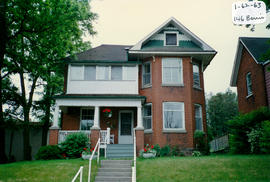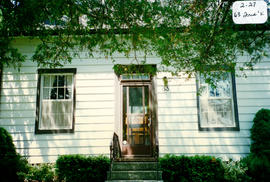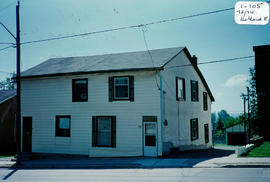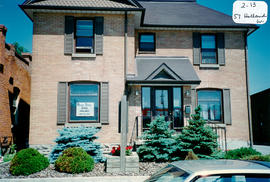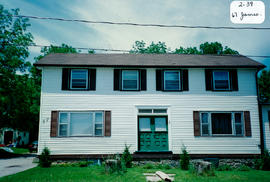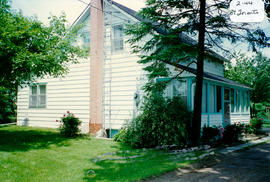- CA BWGPL GJ-HB-2017-03-14-04
- Item
- 1996
Part of George Jackson fonds
The single-family residence located mid-block on the west side at 146 Barrie St. was built around 1900 in the Eclectic Edwardian style. The two-storey, ‘L’-shaped building has a hip roof and a projecting, two-storey bay that includes a gable roof with bracket supports. There are Doric colonnettes on brick piers that support the porch roof and balcony. When first built, the second-floor balcony would have had a simple, wooden handrail similar to the one on the ground floor. Another Edwardian feature is found in the large windows (replacements) with a transom division at the principal windows. The variety of shingle textures and colours at the exposed gable is a Queen Anne feature. The hip roof and roof curb are Italianate features. The house has brick masonry construction, a stone foundation, and a painted wood porch and gable features. According to the 2000 inventory, the enclosed balcony above the porch and the aluminum soffits and trim are unsympathetic with the original design. (1, 3)
George Jackson

